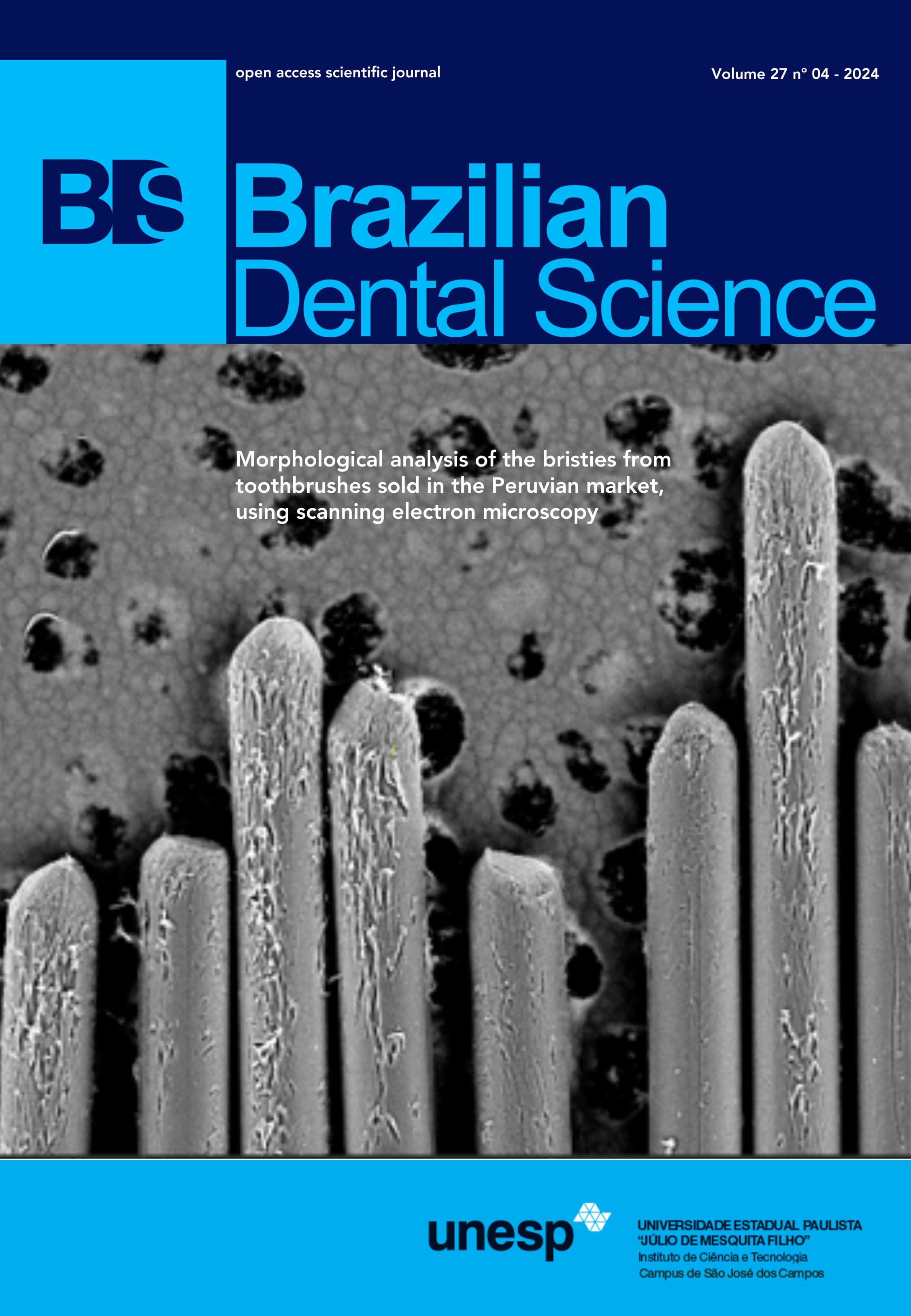Volumetric measurement of sleep bruxism-like indentations on acrylic surface using intraoral scanner and inlay wax
DOI:
https://doi.org/10.4322/bds.2024.e4394Resumo
Objective: This in vitro study introduced methods to measure the volume of sleep bruxism-like indentations to be used in the evaluation of bruxing intensity. Material and Methods: Indentations of different sizes and depths were created on seven clear heat-cured acrylic blocks. The volume of all indentations was first measured by a profilometer as the gold standard, then by scanning the negative replicate of the indentations obtained from polyvinyl siloxane impressions both with double impression technique (IOSD) and putty silicone only (IOSP), using an intraoral scanner, and lastly by weighing the blue inlay wax used to fill the indentation. Agreements between the intraoral scanning and blue inlay wax methods compared to the profilometer were tested using ICC. Results: ICCs between IOSD, IOSP, inlay wax and the profilometer were 0.963, 0.950, and 0.999 respectively. The average volumetric error tended to be greater with IOSD (30.51±8.34 %) and IOSP (35.68±10.29 %) compared to that of blue inlay wax (24.87±10.29 %). Blue inlay wax was apparently superior to IOSD and IOSP in quantifying small and deep indentations. Conclusion: Both intraoral scanner and blue inlay wax had high agreement in volumetric measurement of acrylic indentations while the wax method performed the best. These methods could be used to measure the amount of wear on occlusal splints.
KEYWORDS
Intraoral scanner; Occlusal wear; Occlusal splints; Polyvinyl siloxane; Sleep bruxism.
Downloads
Downloads
Publicado
Como Citar
Edição
Seção
Licença
TRANSFERÊNCIA DE DIREITOS AUTORAIS E DECLARAÇÃO DE RESPONSABILIDADE
Toda a propriedade de direitos autorais do artigo "____________________________________________________________________" é transferido do autor(es) para a CIÊNCIA ODONTOLÓGICA BRASILEIRA, no caso do trabalho ser publicado. O artigo não foi publicado em outro lugar e não foi submetido simultaneamente para publicação em outra revista.
Vimos por meio deste, atestar que trabalho é original e não apresenta dados manipulados, fraude ou plágio. Fizemos contribuição científica significativa para o estudo e estamos cientes dos dados apresentados e de acordo com a versão final do artigo. Assumimos total responsabilidade pelos aspectos éticos do estudo.
Este texto deve ser impresso e assinado por todos os autores. A versão digitalizada deverá ser apresentada como arquivo suplementar durante o processo de submissão.




























